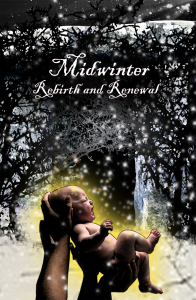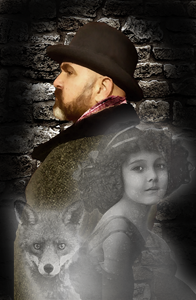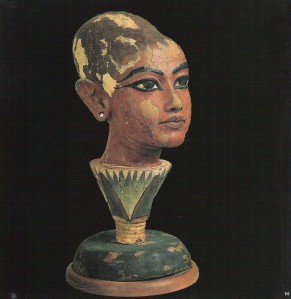by by Jesper Toad

The curved face of Newgrange appears suddenly, looming through the hedgerow of trees, dominating the otherwise flat farmlands. White quartz stones, fished out of the Boyne five millennia gone, shore up the sides of the hill, while the west facing entrance features inwardly bowed walls of dark stone, towering over the cup-marked and bespiraled kerbstone that marks the entrance to this ancient megalithic site. Uncanny, the great mound has an un-natural relationship with surrounding landscape: the entire structure has been constructed by the hands of man.
The monolithic monument of Newgrange in Ireland aligns itself to the winter solstice sunrise, and is believed to have been erected somewhere around 3200-3000 BCE, during a creative cultural and spiritual transition from the construction and use of early tomb-shrines to that of circular ceremonial enclosures. Although it is important to recognize the ritual importance of the stations of the sun, and in particular the nadir of the winter solstice, Newgrange, Stonehenge, and the other megalithic monuments aligned to cardinal points of the sun are atypical, comprising only a small percentage of the hundreds of Neolithic structures in Britain (Hutton, 1996, pp. 4-5).
Midwinter in the northern hemisphere marks the height of the period of cold and darkness, and the point in which the great annual gyre begins spinning back toward light and warmth. The dominant symbolism of the season, shared by several religions, is that of the return of light, often represented in the image of a numinous child emerging from the obscured and unknowable womb of the great mother.
Newgrange swells up from the surrounding Irish countryside like the pregnant belly of a woman, promising life, even though it also serves as the repository that receives the remains of those who have gone before. This megalithic monument seems intimately linked with birth, occurring at the moment of greatest darkness, and death, that darkness into which we all must travel: they are one in the same gate through which we pass between the visible and the invisible realms.
To enter the great burial mound is to take a journey into the underworld. The great kerbstone—the threshold of the house of death and rebirth—must be clambered over, and then one squeezes past the flat, upright stones that line the narrow corridor leading to the inner chambers. As I shimmy sideways and duck where the ceiling is low, I wonder about the people who essayed this passage before me: not just the thousands of tourists wandering through on a yearly basis, but back in the mists of time, to people who approached the mound as a mystery, who housed their dead within this raised earth, and whose bones and ashes eventually found themselves interred in the great stone basins of the side chambers.
The visitors crowd the central chamber beneath the corbelled roof. The lights dim, and finally go out completely in order to demonstrate how the light of the sun passes through the roofbox and travels down the sixty-foot passage to illuminate the farthest reaches of the burial mound. Standing in the utter darkness, I realize how seldom modern Americans experience a complete lack of light, and a tangle of panic begins to unwind from deep in my belly. The weight of the unseen burial mound above and around me presses close, and I fight unbidden feelings of isolation and terror.
Mythically, this traveling into the abysmal depth of the realm of the dead at the time of the winter solstice is the beginning of the abaissement du niveau mental, which exhausts the ego of psychological energy as the individual descends into the creative unconscious to witness the cyclical destruction and recreation of not only the world. It is a rehearsal for the end of our lives, when the temenos of the mother swallows each of us down. The great womb becomes our resting place, our grave: we dissolve in the absolute darkness, returning to an undifferentiated state.
Later this grave, the tomb, the ash-filled urn becomes a womb-like alembic, a transformative container in which the sacred conjunctio oppositorum—the union of opposites—of death and rebirth occurs (Abraham, 1998, p. 219). Reduced back to this primal state of being in the maternal womb we are ready for the recreation of the world, and the re-emergence of the purified and reconstellated ego (Edinger, p. 47-48).
The darkness is so absolute that the images behind my eyes emerge and dance across the vacant visual field. When the dagger of light first dimly glimmers upon the floor, it seems as if it is one of these hypnagogic images, until I brightens enough to banish the phantasmagoria of the mind, and becomes the only thing within the darkened place of death, silence, and possibility. Light darts down the corridor and enters the small crowded space, playing out golden upon the dusty floor, driving panic before it as it fills the room with life and hope.
On the winter and summer solstices the sun appears to set and rise in the same place upon the horizon. The word solstice is phenomenological, deriving from Latin solstitium, meaning that the sun stands still (Hutton, 1996, p. 2). This lack of movement of the solar orb suggests a suspended moment of time, a mystical diastema between the fading of one year and the vitalization of the next.
Newgrange has a special orifice above the main passage through which the morning sun shines, invading the central chambers and disrupting the reign of darkness and death but a few days surrounding the winter solstice (Hutton, 1996, p. 4). This orifice, carved with a geometric lozenge and cross motif, reminds me of the fontanel, that fissure at the top of the skull through which shamanic healers blow back a lost soul into the corpus of the body (Ronnberg, 2010, p. 404). It is through this rectangular stone oculus above the entrance to the tumulus that the sun fertilizes the tomb, calling forth the souls from the fecund darkness, and initializing the return of life and vitality from where it lies resting within the earth. As witnesses to the rebirth of life, we take our place in the cosmic dance of destruction and creation, knowing we will never be eternally lost, but will re-emerge, transformed, to span another and another cycle upon the face of the beloved earth.
In this way we enter into the mythic narrative. The birth of the wunderkinder—the wondrous child—at the winter solstice is also, if we submit to the transformative process, the rebirth of ourselves. Standing in the darkness of the womb-tomb, between the living and the dead, at the moment the sun stops, our hearts stop, our minds stop, creativity incubates and we prepare for a new stage of growth. If we have engaged out work in earnest we experience an apocatastasis, a resurrection to an original state of wholeness and potential.
The tourists file out, ducking the low stones, and squeezing the narrows. The passage out of the tumulus is now like a birth canal, as one by one we blink our way into the sunlight to clamber over the great kerbstone. I pause, looking at the spirals, circling in, circling out, in a constant circumambulation around an obscured center point. Walking out amongst the stones upon the Irish green on this soft summer day, I wonder at the re-enactment of the midwinter sunrise in the darkness and the elsewhere and the elsewhen it evoked.
When we have come through the darkness, when the sun has begun to strengthen and we know that the fertile seasons are fated to return, then it is time for celebration. The pre-Christian festivals that marked the dying and reborn annual cycle included various practices, common among them bedecking living spaces with evergreens, feasting, gift-giving, dancing, and singing. Consequently, a song seems most appropriate. I have adapted the old carol to suit new needs, to serve as a song for this endris night—endris meaning long and enduring—at the dark time of the winter solstice.
This Endris Night
This cold and lonely endris night
Of darkness and dismay
The shadows catch between my bones
Lullay, bye-bye, lullay.
But from my belly shines a light
A babe as bright as day
Struggling to be born this night
Lullay, bye-bye, lullay.
The babe’s head crowns as if through clouds
No moon or star astray
And cries aloud into the dark
Lullay, bye-bye, lullay.
My arms enclose the lambent form
An innocent display:
The babe upon the mother’s breast
Lullay, bye-bye, lullay.
Brought forth upon this endris night
You bring the break of day,
Sweet child of promise, child of light,
Lullay, bye-bye, lullay.
The interplay of light and dark—
The stars, the moon, the day—
Each spirit tending to its sphere
Lullay, bye-bye, lullay.
Brought forth upon this endris night
You bring the break of day,
Sweet child of promise, child of light,
Lullay, bye-bye, lullay.
Hutton, R. (1996). The stations of the sun: A history of the ritual year in Britain. Oxford, UK: Oxford University Press.
Ronnberg, A (Ed.). (2010). The book of symbols: Reflections on archetypal imagery. Cologne, Germany: Taschen
Edinger, E. (1985). Anatomy of the psyche: Alchemical symbolism in psychotherapy. La Salle, IL: Open Court.
Abraham, L. (1995). A dictionary of alchemical imagery. Cambridge, UK: Cambridge University Press.

Jesper Toad is a Georgian and a Gardnerian initiate, and studied the Feri Tradition with T. Thorn Coyle for nearly three years. His personal practice of three decades blends elements of all these traditions, as well incorporating spiritualist, shamanic and depth psychological perspectives. These seasonal writings and images are excerpts from The Enchiridion Magistellus, A Visual Handbook of the Witches’ Art. Jesper can be contacted at jespertoad@gmail.com.

